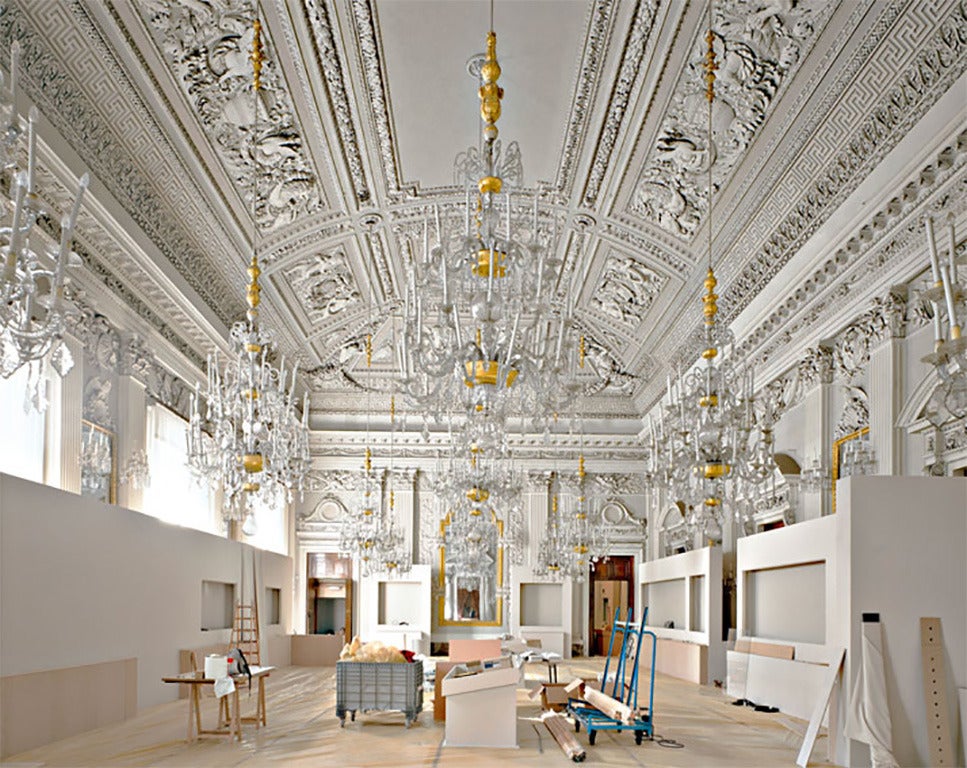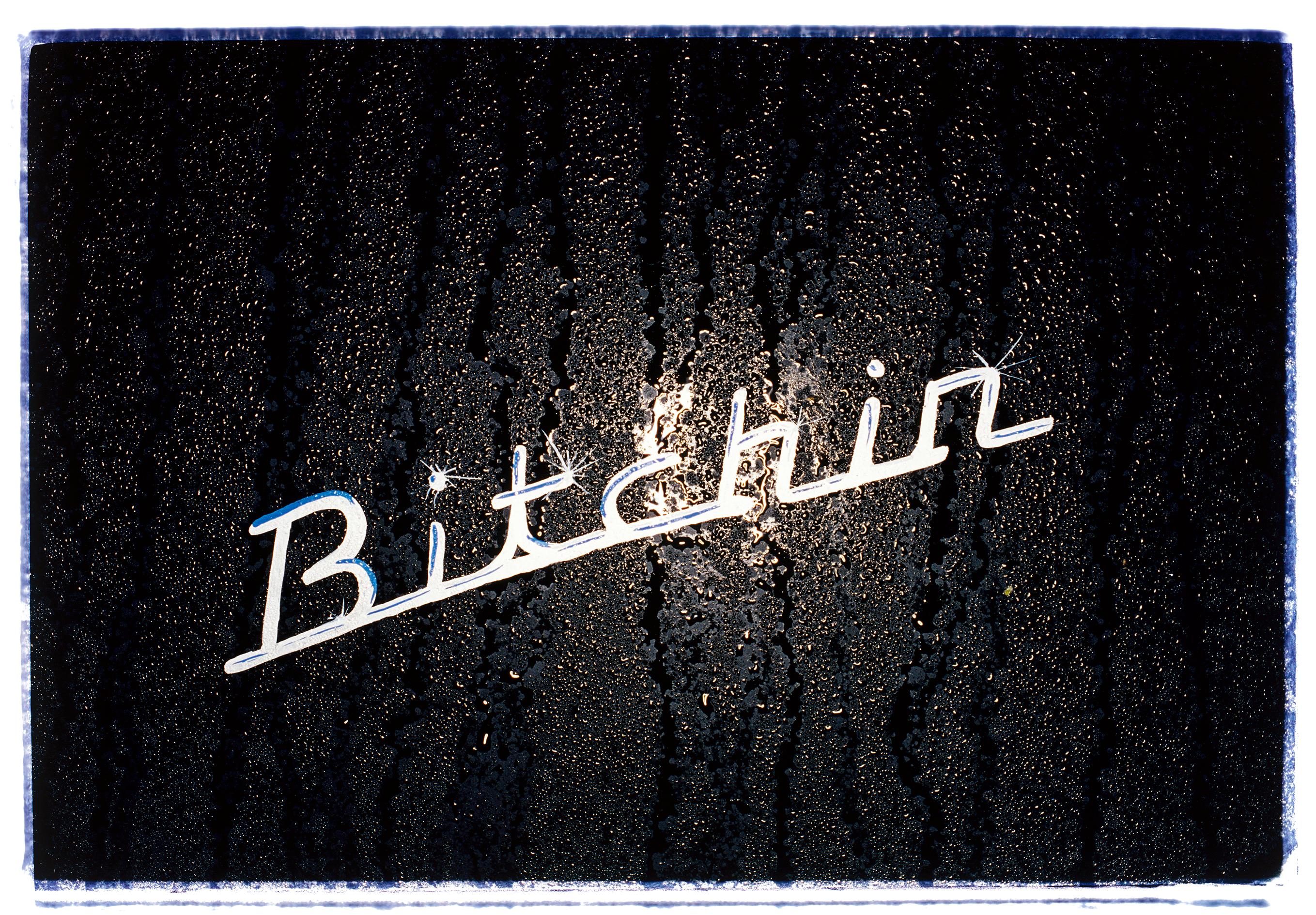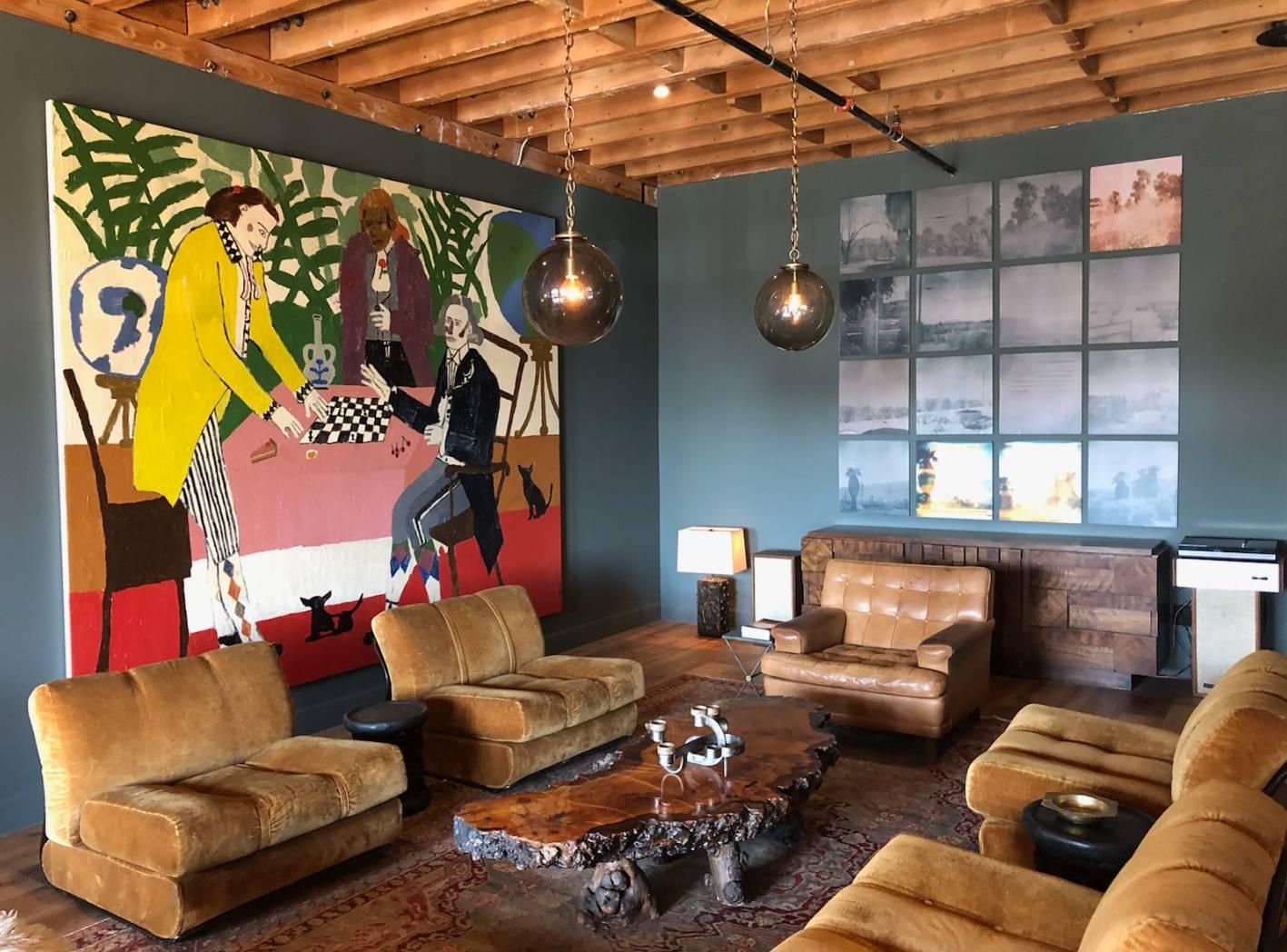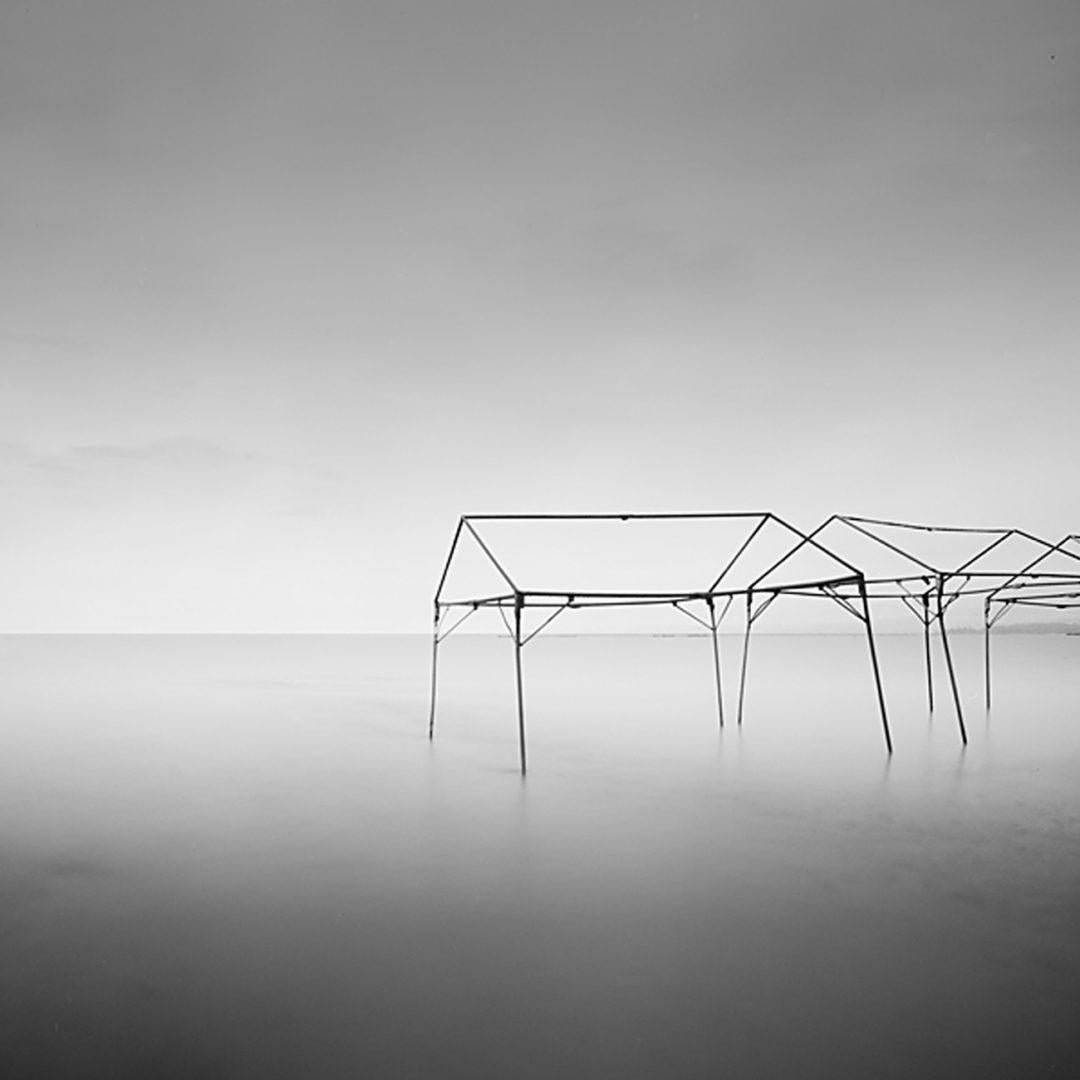Items Similar to Palazzo Pitti, Sala Bianca I, Firenze
Want more images or videos?
Request additional images or videos from the seller
1 of 4
Massimo ListriPalazzo Pitti, Sala Bianca I, Firenze2008
2008
About the Item
Palazzo Pitti, Sala Bianca I Firenze, 2008
The photographer is based in Florence, and is fascinated how his architectural subject matter allows him to control the composition of his image. For many years he has photographed classicism devoid of people. More than a simple record of architecture, through his lens Listri rediscovers historical spaces and invites us to examine them afresh. His oeuvre has been presented at many public and private foundations worldwide. Through the course of his career he has published over fifty books on art and architecture.
"What makes his work unique is how he has made interiors look so absolutely vivid, as if they had a secret life of their own that only he knows how to portray. Listri has the extraordinary ability to capture all the small details that make the difference and reveal all the stories that remain hidden behind the surface. Listri's photos transmit an almost deafening silence, as if time had stopped and humans had suddenly disappeared and the only thing reminiscent of them are the interiors they've left behind, the remains of their lives and their passions, their art and their culture." Apostolos Mitsios
39.5 x 47.5 inches edition of 5 - $14,500
47.5 x 59 inches edition of 5 - $16,500
71 x 88.5 inches edition of 5 - $28,500
Contact IFAC Arts for more information
- Creator:Massimo Listri (1954, Italian)
- Creation Year:2008
- Dimensions:Height: 47.5 in (120.65 cm)Width: 59 in (149.86 cm)
- Medium:
- Movement & Style:
- Period:
- Condition:
- Gallery Location:New York, NY
- Reference Number:1stDibs: LU3264942231
About the Seller
5.0
Vetted Seller
These experienced sellers undergo a comprehensive evaluation by our team of in-house experts.
Established in 1996
1stDibs seller since 2013
654 sales on 1stDibs
Typical response time: 6 hours
- ShippingRetrieving quote...Ships From: New York, NY
- Return PolicyA return for this item may be initiated within 3 days of delivery.
More From This SellerView All
- Palazzo Pitti, Sala Bianca I, FirenzeBy Massimo ListriLocated in New York, NYPalazzo Pitti, Sala Bianca I Firenze, 2008 The photographer is based in Florence, and is fascinated how his architectural subject matter allows him to c...Category
21st Century and Contemporary Realist Color Photography
MaterialsC Print
- Afghan Girl (Peshawar, Pakistan)By Steve McCurryLocated in New York, NYSteve McCurry Afghan Girl 1984 (printed later C-print on Fuji Crystal archival paper 24 x 20 inches Signed and dated Steve McCurry has been one of the mos...Category
1980s Realist Color Photography
MaterialsC Print
- Massimo Listri 'Castello di Rivoli III - Torino'By Massimo ListriLocated in New York, NYCastello di Rivoli III - Torino "What makes his work unique is how he has made interiors look so absolutely vivid, as if they had a secret life of their own that only he knows how...Category
21st Century and Contemporary Realist Color Photography
MaterialsC Print
- Massimo Listri 'Castello di Rivoli III - Torino'By Massimo ListriLocated in New York, NYCastello di Rivoli III - Torino "What makes his work unique is how he has made interiors look so absolutely vivid, as if they had a secret life of their own that only he knows how t...Category
21st Century and Contemporary Realist Color Photography
MaterialsC Print
- Massimo Listri 'Castello di Rivoli III - Torino'By Massimo ListriLocated in New York, NYCastello di Rivoli III - Torino "What makes his work unique is how he has made interiors look so absolutely vivid, as if they had a secret life of their own that only he knows how t...Category
21st Century and Contemporary Realist Color Photography
MaterialsC Print
- Biblioteca Palatina - ParmaBy Massimo ListriLocated in New York, NYBiblioteca Palatina - Parma, 2012 The Biblioteca Palatina (also known as Reale Biblioteca Parmense, Biblioteca Nazionale, Bibliothèque Imperiale, Bibliothèque de la Ville de Parme...Category
21st Century and Contemporary Realist Color Photography
MaterialsC Print
You May Also Like
- Bitchin, Norfolk - Typography Monochrome PhotographyBy Richard HeepsLocated in Cambridge, GB'Bitchin', bold monochrome typographic photograph from Richard Heeps 'Man's Ruin' series, taken at the Hemsby Rock 'n' Roll Weekender. This artwork is a limited edition of 25 gloss ...Category
Early 2000s Pop Art Color Photography
MaterialsPhotographic Paper, C Print, Color, Silver Gelatin
- Oasis (Sidewinder) - 21st Century, Contemporary, Polaroid, LandscapeBy Stefanie SchneiderLocated in Morongo Valley, CAOasis (Sidewinder), 2005, Edition 3/5, 16 pieces each 48x47cm analog C-Prints, hand-printed by the artist, printed on Fuji Crystal Archive Paper, based on Polaroids mounted on Aluminum with matte UV-Protection, based on an expired Polaroids, Artist inventory Number 3001.03 Installation shot at 'Mulholland Distilling' in LA with Danny Fox...Category
Early 2000s Contemporary Black and White Photography
MaterialsArchival Paper, Photographic Paper, C Print, Color, Polaroid
- Wireframe, JapanBy David BurdenyLocated in New York City, NYEdition of 5Category
Early 2000s Minimalist Color Photography
MaterialsArchival Pigment
- Manhattan photograph 'New York Walk' 1984 (1980s New York street photography)By Fernando NataliciLocated in NEW YORK, NY"New York Walk " by Fernando Natalici: Manhattan 1984. The simplicity & grace of the anonymous passer-by rendered timeless by the snap of the camera. A window into a street photogra...Category
1980s Abstract Color Photography
MaterialsSilver Gelatin
- Vintage Large Albumen Photo Jerusalem Photograph American Colony Old City MarketBy American Colony JerusalemLocated in Surfside, FLThe mat measures 21 X 16 the images are around 12 X 9 inches. They bear the blindstamp of the American Colony Jerusalem. I am not sure if these are hand colored but they are from the period. Old City Shuk or Souq. The Original American Colony was a colony established in Jerusalem in 1881 by members of a utopian society led by Anna and Horatio Spafford. Now a hotel in East Jerusalem, it is still known by that name today. After suffering a series tragic losses following the Great Chicago Fire of 1871 (see hymn "It is Well with My Soul"), Chicago residents Anna and Horatio Spafford led a small American contingent in 1881 to Jerusalem to form a utopian society. The "American Colony," as it became known, was later joined by Swedish Christians. The society engaged in philanthropic work amongst the people of Jerusalem regardless of religious affiliation, gaining the trust of the local Muslim, Jewish, and Christian communities.During and immediately after World War I, the American Colony carried out philanthropic work to alleviate the suffering of the local inhabitants, opening soup kitchens, hospitals, orphanages and other charitable ventures. Towards the end of the 1950s, the society's communal residence was converted into the American Colony Hotel. The hotel is an integral part of the Jerusalem landscape where members of all communities in Jerusalem still meet. In 1992 representatives from the Palestine Liberation Organization and Israel met in the hotel where they began talks that led to the historic 1993 Oslo Peace Accord. Panorama of Jerusalem, c. 1890-1920 The Colony moved to the large house of a wealthy Arab landowner, Rabbah Husseini, outside the city walls in Sheikh Jarrah on the road to Nablus. Part of the building was used as a hostel for visitors from Europe and America. A small farm developed with animals, a butchery, a dairy, a bakery, a carpenter's shop, and a smithy. The economy was supplemented by a shop selling photographs, craft items and archaeological artifacts. The American Colonists were embraced by the Jewish and Palestinian communities for their good works, among them, teaching in both Muslim and Jewish schools. Photography Around 1900, Elijah Meyers, a member of the American Colony, began taking photographs of places and events in and around the city of Jerusalem. Meyers's work eventually expanded into a full-fledged photographic division within the Colony, including Hol Lars (Lewis) Larsson and G. Eric Matson, who later renamed the effort as the Matson Photographic Service. Their interest in archeological artifacts (such as the Lion Tower in Tripoli pictured here), and the detail of their photographs, led to widespread interest in their work by archeologists. The collection was later donated to the Library of Congress. World War I When the Ottoman Empire entered World War I as an ally of Germany in November 1914, Jerusalem and Palestine became a battleground between the Allied and the Central powers. The Allied forces from Egypt, under the leadership of the British, engaged the German, Austrian and Turkish forces in fierce battles for control of Palestine. During this time the American Colony assumed a more crucial role in supporting the local populace through the deprivations and hardships of the war. Because the Turkish military...Category
Early 20th Century Academic Black and White Photography
MaterialsPhotographic Paper
- Vintage Large Albumen Photo Jerusalem Photograph American Colony Mt Zion TreesBy American Colony JerusalemLocated in Surfside, FLThe mat measures 21 X 16 the images are around 12 X 9 inches. They bear the blindstamp of the American Colony Jerusalem. I am not sure if these are hand colored but they are from the period. Old City Shuk or Souq. The Original American Colony was a colony established in Jerusalem in 1881 by members of a utopian society led by Anna and Horatio Spafford. Now a hotel in East Jerusalem, it is still known by that name today. After suffering a series tragic losses following the Great Chicago Fire of 1871 (see hymn "It is Well with My Soul"), Chicago residents Anna and Horatio Spafford led a small American contingent in 1881 to Jerusalem to form a utopian society. The "American Colony," as it became known, was later joined by Swedish Christians. The society engaged in philanthropic work amongst the people of Jerusalem regardless of religious affiliation, gaining the trust of the local Muslim, Jewish, and Christian communities.During and immediately after World War I, the American Colony carried out philanthropic work to alleviate the suffering of the local inhabitants, opening soup kitchens, hospitals, orphanages and other charitable ventures. Towards the end of the 1950s, the society's communal residence was converted into the American Colony Hotel. The hotel is an integral part of the Jerusalem landscape where members of all communities in Jerusalem still meet. In 1992 representatives from the Palestine Liberation Organization and Israel met in the hotel where they began talks that led to the historic 1993 Oslo Peace Accord. Panorama of Jerusalem, c. 1890-1920 The Colony moved to the large house of a wealthy Arab landowner, Rabbah Husseini, outside the city walls in Sheikh Jarrah on the road to Nablus. Part of the building was used as a hostel for visitors from Europe and America. A small farm developed with animals, a butchery, a dairy, a bakery, a carpenter's shop, and a smithy. The economy was supplemented by a shop selling photographs, craft items and archaeological artifacts. The American Colonists were embraced by the Jewish and Palestinian communities for their good works, among them, teaching in both Muslim and Jewish schools. Photography Around 1900, Elijah Meyers, a member of the American Colony, began taking photographs of places and events in and around the city of Jerusalem. Meyers's work eventually expanded into a full-fledged photographic division within the Colony, including Hol Lars (Lewis) Larsson and G. Eric Matson, who later renamed the effort as the Matson Photographic Service. Their interest in archeological artifacts (such as the Lion Tower in Tripoli pictured here), and the detail of their photographs, led to widespread interest in their work by archeologists. The collection was later donated to the Library of Congress. World War I When the Ottoman Empire entered World War I as an ally of Germany in November 1914, Jerusalem and Palestine became a battleground between the Allied and the Central powers. The Allied forces from Egypt, under the leadership of the British, engaged the German, Austrian and Turkish forces in fierce battles for control of Palestine. During this time the American Colony assumed a more crucial role in supporting the local populace through the deprivations and hardships of the war. Because the Turkish military...Category
Early 20th Century Academic Black and White Photography
MaterialsPhotographic Paper





